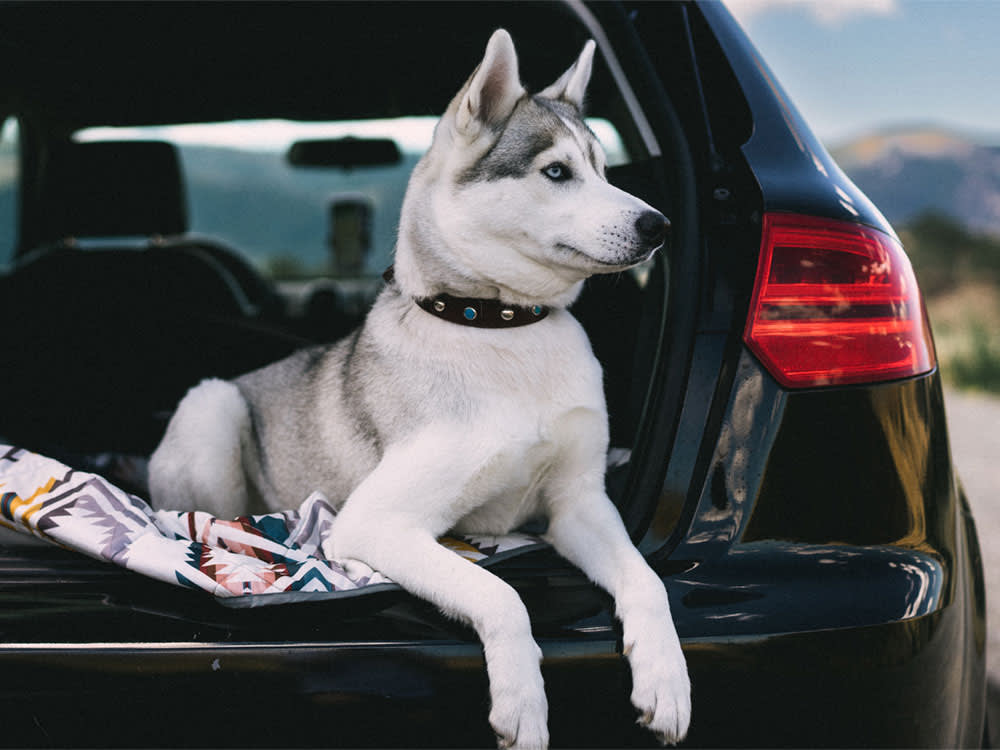A Comprehensive Guide: Navigating Long-Distance Travel with Your Canine Companion

Introduction:
Embarking on a long-distance journey with your furry friend can be a rewarding adventure, but it requires careful planning, consideration, and attention to your dog’s comfort and well-being. Whether you’re road-tripping, flying, or taking a train, ensuring a smooth travel experience for both you and your dog involves thorough preparation and thoughtful execution. In this comprehensive guide, we’ll explore a myriad of tips, tricks, and considerations on how to travel a long distance with your beloved canine companion, making the journey enjoyable, safe, and memorable for both of you.
Section 1: Pre-Travel Preparations
1.1 Veterinary Checkup:
Before embarking on a long journey, schedule a visit to the veterinarian for a thorough checkup. Ensure your dog is up-to-date on vaccinations, and discuss any specific health considerations related to travel, such as motion sickness or anxiety.
1.2 Identification and Microchipping:
Ensure your dog has proper identification, including an updated ID tag with your contact information. Additionally, consider having your dog microchipped as an extra precaution in case of accidental separation during the journey.
1.3 Familiarize with Travel Equipment:
Introduce your dog to the travel equipment they’ll be using, such as a travel crate or harness. Make it a positive experience by associating the equipment with treats and praise, creating a sense of comfort and familiarity.
Section 2: Choosing the Right Transportation Method
2.1 Road Trips:
If traveling by car, plan your route with frequent stops for bathroom breaks, exercise, and hydration. Ensure your dog is secure in a well-ventilated crate or a harness designed for car travel. Familiarize your dog with short drives before the long journey to reduce anxiety.
2.2 Air Travel:
When flying, choose airlines with pet-friendly policies. Check their specific regulations regarding pet carriers, required documentation, and any restrictions on breed or size. Book a direct flight when possible to minimize travel time.
2.3 Train Travel:
If taking a train, research the pet policies of the railway company. Ensure your dog is comfortable in a travel crate or harness, and make reservations for a pet-friendly carriage. Familiarize your dog with the sounds and sensations of train travel beforehand.
Section 3: Essential Packing for Your Dog
3.1 Food and Water:
Pack sufficient food for the journey, considering potential delays. Bring your dog’s regular food to avoid digestive issues. Carry a collapsible water bowl and ensure access to fresh water throughout the trip.
3.2 Medications and Health Supplies:
If your dog requires medications, ensure an adequate supply for the duration of the journey. Pack a basic first aid kit, including any prescribed medications, bandages, and antiseptic wipes.
3.3 Comfort Items:
Bring familiar items, such as your dog’s favorite blanket, toys, or a piece of your clothing. These comfort items provide a sense of security and familiarity in unfamiliar environments.
Section 4: Ensuring Comfort and Safety
4.1 Restraints and Containment:
Whether traveling by car or other means, use appropriate restraints to ensure your dog’s safety. This may include a well-ventilated travel crate, a seat belt harness, or other approved restraints designed for your chosen mode of transportation.
4.2 Comfortable Seating:
Ensure your dog has a comfortable and secure place to sit or rest during the journey. Whether it’s a designated spot in the car, a travel crate, or a cushioned area on a train, prioritize your dog’s comfort to reduce stress.
4.3 Temperature Considerations:
Be mindful of temperature variations during your journey. Avoid leaving your dog in a hot car, and ensure they have adequate ventilation and protection from the cold if necessary. Bring along weather-appropriate gear, such as a doggy jacket or cooling mat.
Section 5: Coping with Anxiety and Stress
5.1 Gradual Desensitization:
If your dog experiences travel anxiety, gradually desensitize them to the travel environment. Start with short trips and gradually increase the duration, rewarding positive behavior with treats and praise.
5.2 Calming Aids:
Consider using calming aids, such as pheromone sprays, calming collars, or supplements recommended by your veterinarian. These aids can help alleviate stress and anxiety during the journey.
5.3 Familiar Scents:
Bring items with familiar scents to comfort your dog, such as bedding or a piece of fabric from home. Familiar smells can provide a sense of security in new environments.
Section 6: Staying at Pet-Friendly Accommodations
6.1 Research Accommodations:
Plan your accommodations in advance and choose pet-friendly hotels, motels, or vacation rentals. Verify their pet policies, including any additional fees, size restrictions, or specific rules for pet guests.
6.2 Exercise Opportunities:
Select accommodations that offer opportunities for your dog to exercise and relieve themselves. Seek hotels with nearby parks or walking trails, ensuring your dog gets the physical activity they need.
6.3 In-Room Comfort:
Create a comfortable space for your dog within your accommodation. Bring their bed or a familiar blanket, and set up a designated area where they can relax and feel at ease.
Section 7: Adapting to New Environments
7.1 Gradual Acclimatization:
Allow your dog time to acclimate to new environments. Start by introducing them to one room and gradually expand their access. This approach helps your dog feel secure in unfamiliar surroundings.
7.2 Exploration and Familiarization:
Take short walks around the new area to allow your dog to explore and become familiar with the scents and surroundings. Positive experiences during these outings contribute to their overall comfort.
7.3 Maintaining Routine:
Stick to your dog’s regular routine as much as possible, including feeding times, walks, and play sessions. Consistency provides a sense of stability, even in new surroundings.
Section 8: Emergency Preparedness
8.1 Identification and Documentation:
Ensure your dog’s identification tags are current and include your contact information. Carry a copy of your dog’s medical records, vaccination history, and a recent photo. In case of emergencies, having this information readily available is crucial.
8.2 Emergency Kit:
Prepare an emergency kit for your dog, including basic first aid supplies, any necessary medications, and contact information for local veterinarians along your route.
8.3 Familiarize with Local Veterinary Services:
Research veterinary services along your route and at your destination. Be aware of their operating hours and emergency services in case you need assistance during your journey.
Conclusion:
Traveling a long distance with your dog is a unique and rewarding experience that requires careful planning, consideration, and adaptability. By prioritizing your dog’s comfort, safety, and well-being through pre-travel preparations, choosing the right transportation method, packing essentials, ensuring comfort and safety, addressing anxiety and stress, staying at pet-friendly accommodations, adapting to new environments, and being prepared for emergencies, you can create a positive and memorable journey for both you and your canine companion. Remember, the key to successful long-distance travel with your dog lies in thoughtful planning, flexibility, and the shared joy of exploring new horizons together. Safe travels!




